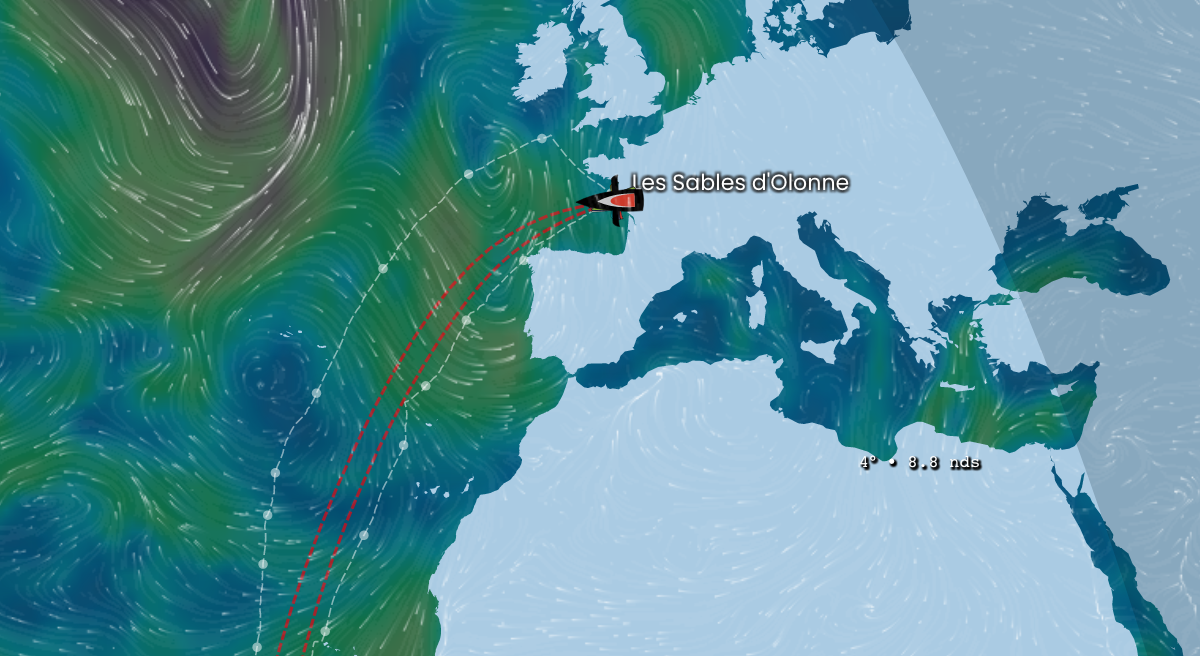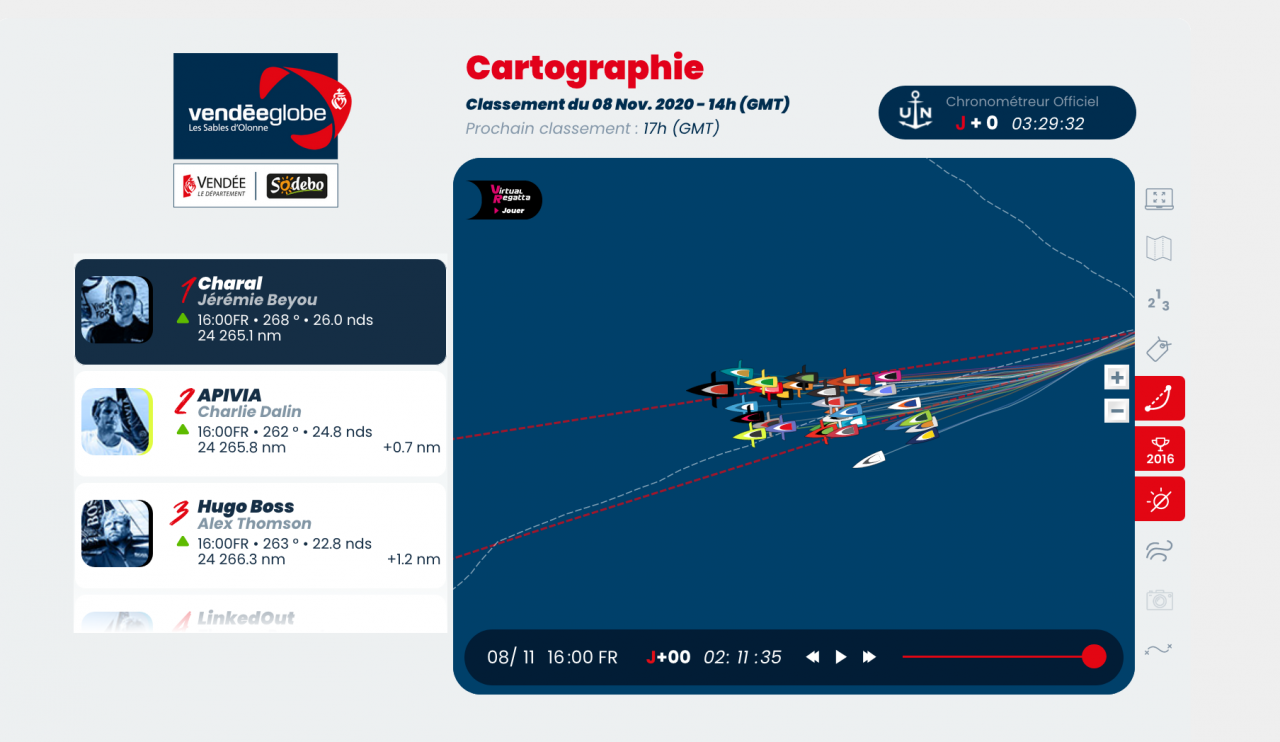WEATHER UPDATE: Marcel Van Triest 'The first big test comes on Tuesday night'

The ninth edition of the Vendée Globe has started in benign conditions, but the 33 skippers dreaming of a non-stop solo round-the-world passage will have their first big test on Tuesday night, according to the top sailing meteorologist Marcel Van Triest.
That’s because there is a big weather feature in the Atlantic – a pronounced trough line – that is lying on a north-south axis from Iceland to the east of the Canary Islands, and the skippers will be looking to cross that to get into favourable northwesterly winds behind it.
The moment of truth will be on Tuesday evening when the breeze will start to ramp up for the leading boats.
“That passage is going to be a little bit nasty,”said Van Triest who has been advising Jérémie Beyou (Charal), Kevin Escoffier (PRB) and Clarisse Crémer (Banque Populaire X) in the build-up to the start.
“Leading up to the front, the wind is probably going to be 30-35 knots and in the frontal passage itself there will be a few squalls with maybe 40 knots.”
The key though will be the sea state which Van Triest says could be destructive unless skippers are well prepared and have their boats well reefed to cope with a violent phase as they head west. “The sea state is going to be horrendous,” he said, “because the sea will be running almost opposite to the wind, so it’s going to be a complete cross sea with a washing machine kind of deal."
“Getting through the trough is going to be a big moment for everyone,” he added. “Given that there are 33 boats, you would have to assume that some of them will sustain some damage – I don’t know if it will be serious, forcing some skippers to retire, or just a case of a few broken sails.”
The good thing is that that baptism of fire does not come for a couple of days, giving the sailors a chance to settle down and settle into the rhythm of the race before they hit really challenging conditions.
Having started on flat water in a nice southeasterly breeze off Les Sables d’Olonne, the fleet will be heading through an old decaying weather front early this evening when the wind will go light. During this transition the skippers will be changing sails and trying to keep the pace up before the breeze builds again from the southwest as they head towards the Traffic Separation Scheme off Cape Finisterre (Spain).
By Monday evening they will be back in light conditions as they fetch towards the west and the appointment with the trough on Tuesday.
In general Van Triest says the weather pattern in the north Atlantic is highly unusual, with the start phase affected by a disorganised low pressure system that formed off Gibraltar, and with light winds blocking the route south through the Canary Islands. He believes the leading boats will pass about 400 miles west of the Canary Islands on a course taking them between Madeira and the Azores.
Van Triest says the trade winds are weak in the north Atlantic but “look fairly normal” in the south Atlantic. He also noted that this looks like being a relatively low-risk year for icebergs once the fleet gets into the Southern Ocean.
Ed Gorman
Teams info
Paul Meilhat puts words on the frustration of having had to put his race on hold
On Friday, May 3rd, while Paul Meilhat was sailing in third position in The Transat CIC, his IMOCA collided with an unidentified floating object (UFO). An event not without consequences, which damaged the foil and the po…
•••IMOCA Race Report #2 I The Transat CIC - Day 6
At the halfway point, Conrad Colman, skipper of the IMOCA MS Amlin, gives us an update on what's happening at sea. Strategy, weather forecasts, conditions on board... you'll know it all!
•••
